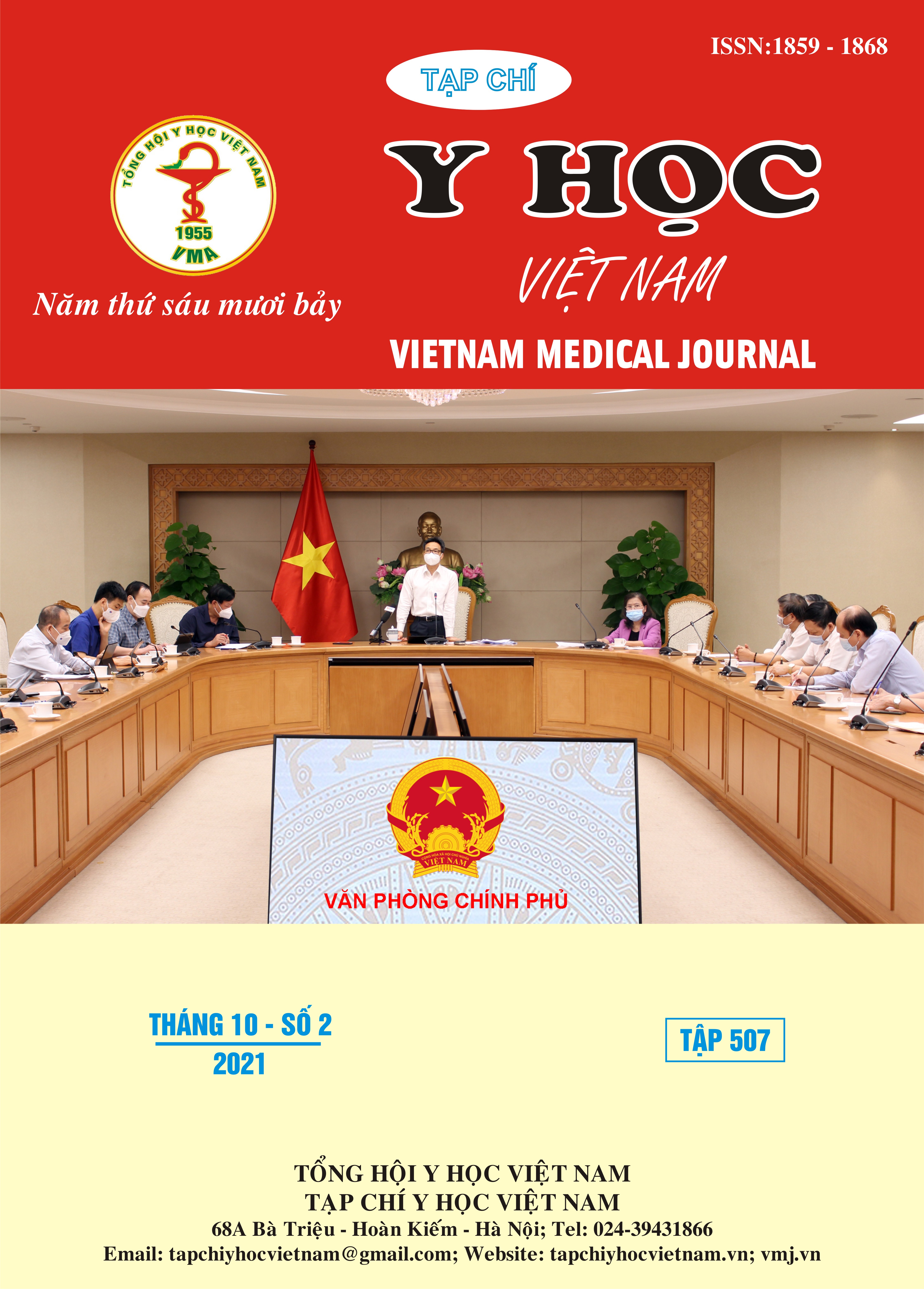FACTORS THAT INFLUENCE THE OCCURRENCE OF MULTIPLE PREGNANCIES AFTER FROZEN EMBRYO TRANSFER ON DAY 3
Main Article Content
Abstract
Multiple pregnancies are an important complication of In Vitro Fertilization (IVF). This study aims to indentify the related factors for multiple pregnancies after frozen embryo transfers on day 3. This retrospective study carred out on 112 patients who underwent intracytoplasmic sperm injection (IVF/ICSI) cycles in Center of IVF and Tissue engineering, Hanoi Medical University Hospital between January 2018 and December 2020. Factors were obtained from two groups: cycles with double frozen embryos transfer and cycles that transferred three frozen embryos. These factors were entered into multivariable logistic regression to identify related factors for multiple pregnancies. The results showed that, in 112 patients with at least 1 gestational sac after embryo transfer, the rate of multiple pregnancies accounted for 36%. The incidence of multiple pregnancy in the group of three embryos transfer was 1.685 times higher than that of the double embryos transfer group. Maternal age and quality of transfered embryo also affect the number of gestational sacs of the patient, the rate of multiple pregnancies increased in the younger age group (37.4% in the group < 35 years old and 28.6% in the group ≥ 35 years old), the incidence of multiple pregnancy in the group with only 1 embryo of grade 1 or 2 decreased 0.654 times than the group with both embryos of grade 1 and 2.
Article Details
Keywords
Multiple Pregnancies, In vitro Fertilization, Intracytoplasmic Injection Cycles, Frozen Embryo Transfer on Day 3
References
2. Sibai BM, Hauth J, Caritis S, et al. Hypertensive disorders in twin versus singleton gestations. National Institute of Child Health and Human Development Network of Maternal-Fetal Medicine Units. Am J Obstet Gynecol. 2000;182(4):938-942.
3. Luke B, Keith LG. The contribution of singletons, twins and triplets to low birth weight, infant mortality and handicap in the United States. J Reprod Med. 1992;37(8):661-666.
4. Niu Z-H, Feng Y, Zhang A-J, Zhang H-Q, Sun Y-J, Lu X-W. [Factors related to occurrence of twin pregnancy after double-embryo transfer in vitro fertilization cycles]. Zhonghua Fu Chan Ke Za Zhi. 2009;44(6):413-417.
5. Kim MS, Kim JH, Jee BC, Suh CS, Kim SH. Factors affecting occurrence of twin pregnancy after double embryo transfer on day 3. J Obstet Gynaecol Res. 2015;41(8):1223-1228.
6. Abdollahi M, Omani Samani R, Hemat M, et al. Factors that Influence The Occurrence of Multiple Pregnancies after Intracytoplasmic Injection Cycles with Two or Three Fresh Embryo Transfers. Int J Fertil Steril. 2017;11(3):191-196.
7. Sunderam S, Chang J, Flowers L, et al. Assisted reproductive technology surveillance--United States, 2006. Morb Mortal Wkly Rep Surveill Summ Wash DC 2002. 2009;58(5):1-25.
8. Han EJ, Kim SK, Lee JR, Jee BC, Suh CS, Kim SH. Multiple pregnancy after single or multiple embryo transfer performed according to Korean guidelines. Clin Exp Reprod Med. 2015;42(4):169-174.


